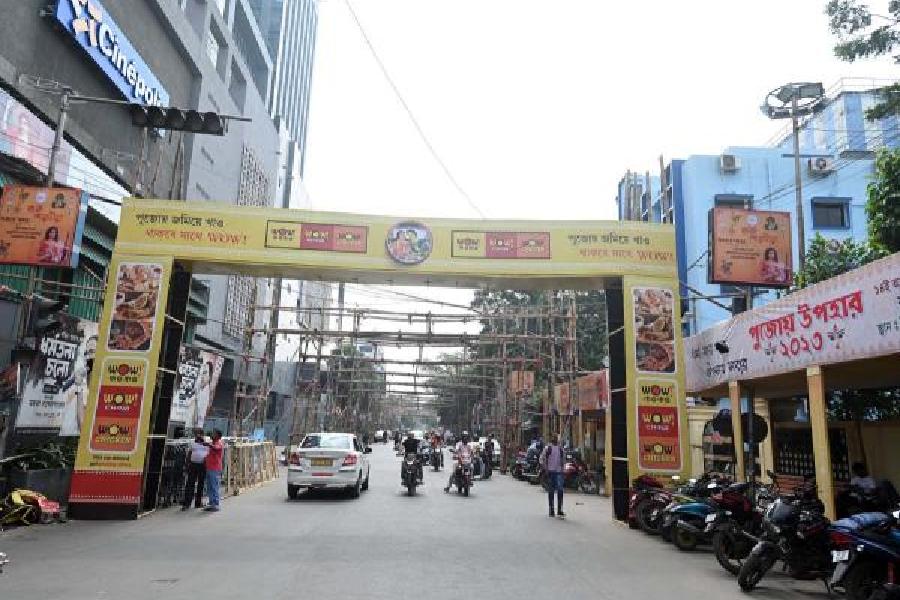Some of the recyclers authorised by the state pollution control board to collect and recycle banners and hoardings have told The Telegraph that not a single Durga Puja committee or advertising agency has contacted them for disposal of banners put up around the pandals.
Thousands of temporary hoardings and banners were put up in Kolkata ahead of the Puja. Many of them have been taken down but some are still looming over roads and pavements.
Their disposal has been a grey area and environment activists have demanded proper guidelines for the disposal.
A waste management specialist said the banners eventually break down into smaller pieces and end up in agricultural fields and water bodies.
The state pollution control board published the names and phone numbers of several recyclers a few days before Durga Puja and asked the puja organisers to “handover the used PVC banners (thickness 100 micron or above) and waste plastic items to any of the Registered Plastic Waste Processors”.
On Sunday, this newspaper called the five recyclers from Kolkata, South 24-Parganas and North-24 Parganas, from the list published by the PCB. All of them said no puja organiser or outdoor agency contacted them.
Saswata Basu, general secretary of the Forum for Durgotsab, an association of Durga Puja organisers, said the organising committees had not been given any list of recyclers.
“I do not know of any such list. We have told all puja organisers to remove the hoardings and banners from Ekadashi. Most have already been removed,” he said.
Kalyan Rudra, chairperson of the West Bengal Pollution Control Board, said: “All puja organisers were given the list of recyclers. They have to be more responsible.”
Jadhab Sen, who runs an outdoor advertising agency, said many of the hoardings and banners that were put up along roads in Kolkata before Durga Puja will be used in Chandernagore during Jagaddhatri Puja.
“Also, they are in demand in districts, where bags are made from them.”
The banners, because they are thick and tough, are used by people living in informal settlements to cover their shanties.
The question, however, remains how many of the used hoardings and banners are reused.
Brajesh Dubey, a professor of civil engineering at IIT Kharagpur who specialises in waste management, said flexes and banners eventually end up in waterbodies and fields.
“If we go outside cities, we will see hutments made of flexes and banners. They are in use for one or two seasons. Owing to wear and tear, the banners are then thrown away. They are either taken to the dumpsite or they break down into microplastics and contaminate the fields and waterbodies,” said Dubey.
This newspaper reported before the Puja that the temporary banners were a threat to public safety. Many of them were erected one above another.
The hoardings, most of which were put up without any structural safety check, blocked buildings, shops and CCTV cameras and also prevented light from street lamps from reaching pavements.
After the Puja, the worry is how they are disposed of.
Besides, many streets and pavements still have hoardings looming over them. Even on Sunday, four days after Dashami, there were hoardings on the road in front of Acropolis Mall, Ramani Chatterjee Road near Gariahat, Janak Road and Harish Mukherjee Road, among other thoroughfares.
